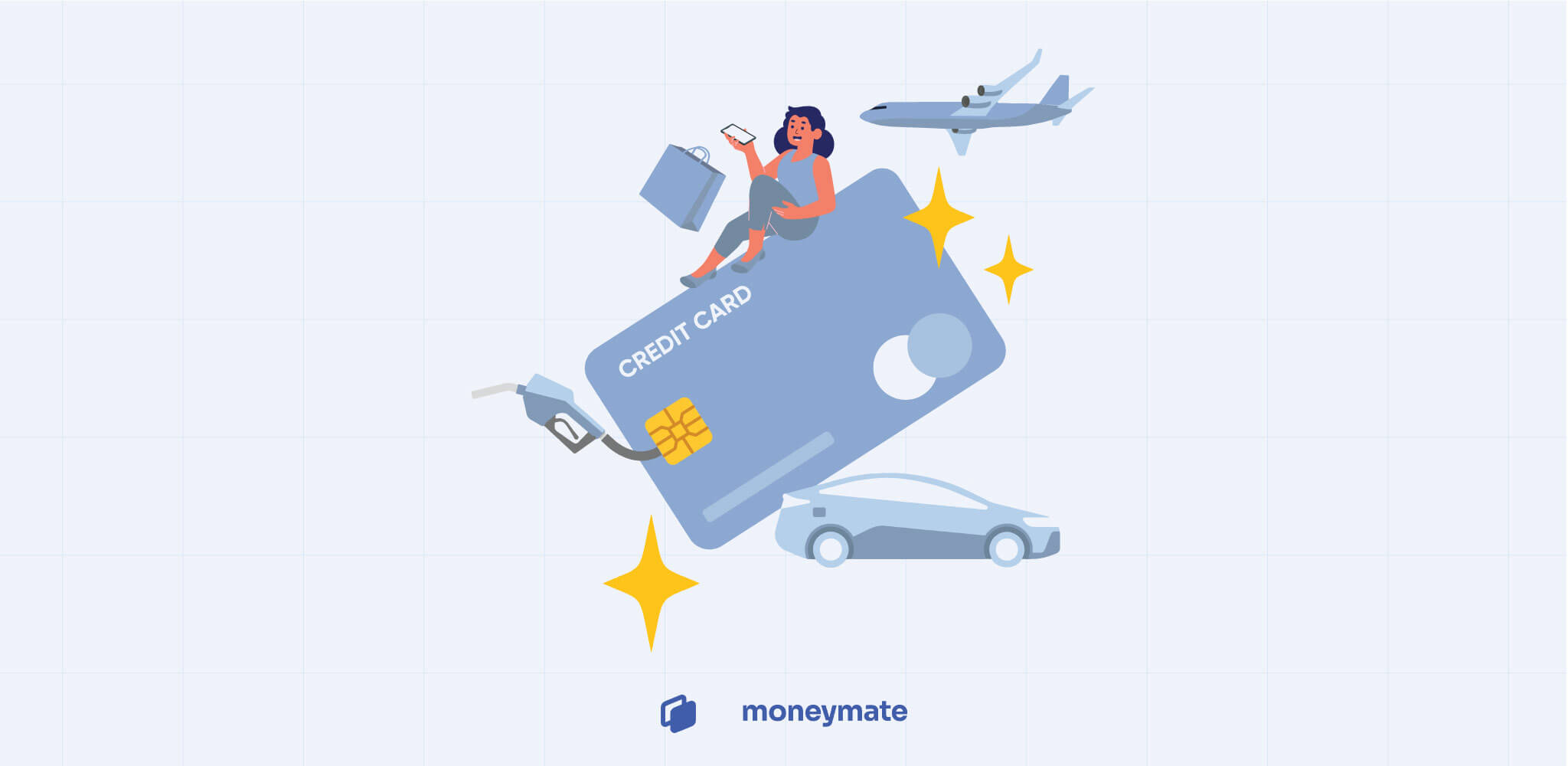Credit cards sometimes get a bad rap for leading people to spend beyond their means.
Used wisely though, credit cards can also be one of the best ways to save money on things you’re already spending on.
But with so many options available, how do you decide on which card to get?
That’s what we’ll cover today.
We’ll recommend 11 credit cards that we think are best in their respective categories, then go over our reasons for each one.
We’ll also answer some of the most commonly asked questions about credit cards at the end.
11 Best Credit Cards for Singapore
| Credit Card | Key Features | Best For |
|---|---|---|
| HSBC Revolution Card |
| Versatility and low maintenance |
| Standard Chartered Smart Card |
| Fuss-free rewards on everyday spending |
| Citi Cash Back+ Card | 1.6% unlimited cashback with bonus 8.4% cashback on first S$3,000 spend | Cashback for large expenses for the first year |
| UOB Absolute Cashback Card | 1.7% unlimited cashback | Consistent unlimited cashback |
| Citi PremierMiles |
| Travel spending |
| Citi Cash Back Card | 6 – 8% cashback on dining, groceries, and petrol worldwide | Foodies and cooks |
| Maybank Horizon Visa Signature Card | 3.2 MPD for dining out, public transport, Grab, taxi, petrol, and Agoda bookings | Earning miles for local spend |
| UOB KrisFlyer Card | 3 MPD for dining & food delivery, transport, travel, online shopping, and purchases with SIA group | KrisFlyer miles |
| Maybank Platinum Visa Card | 3.33% cashback on all local and foreign spend | Cashback for low spenders (>$300/mo) |
| Maybank Family & Friends Card | 8% cashback globally on your choice of 5 categories (out of 10) | Cashback for moderate budgets (>$800/mo) |
| UOB Lady’s Card | 4 MPD / 10X points on a category of your choice | Flexible spending categories |
1. HSBC Revolution Card
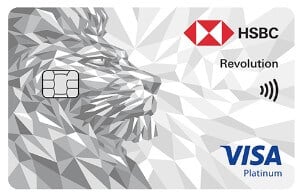
HSBC Revolution Credit Card
Want a fuss-free credit card? The HSBC Revolution Card may fit the bill.
Why we think it’s best: With no annual fees, this is a well-rounded starter credit card for young working professionals. The bonus rewards earn rate applies to all online and mobile contactless payments, which covers just about any purchase you’d use a card for.
Eligibility requirements: Citizens/PRs over 21 years of age with at least S$30,000 annual income. Foreigners must have at least S$40,000 annual income.
Annual fees: None!
Key features:
- 10X Reward Points (or 2.5% cashback) for online and contactless payments
- 1% extra cashback with your HSBC Everyday Global Account
2. Standard Chartered Smart Card

Standard Chartered Smart Card
Some cards reward you with loads of miles for airline ticket purchases and foreign spending. Others reward you closer to home.
Why we think it’s best: Sure, you could get better cashback at the same stores with other cards. But you’d be hard-pressed to find one with no minimum spend or annual fees. That makes the SC Smart Card an easy go-to option when you’re renewing your Netflix subscription or grabbing breakfast at Ya Kun just before work.
Eligibility requirements: Citizens/PRs over 21 years of age with at least S$30,000 annual income. Foreigners must have at least S$60,000 annual income.
Annual fees: None!
Key features:
- 6% cashback in 360°Reward Points on:
- Fast Food: Burger King, KFC, MacDonald’s, Subway
- Coffee and Toast: Fun Toast, Toast Box, Ya Kun
- Digital Subscriptions: Disney+, Netflix, Spotify, YouTube
- Daily Commute: Bus and MRT
3. Citi Cash Back+ Card
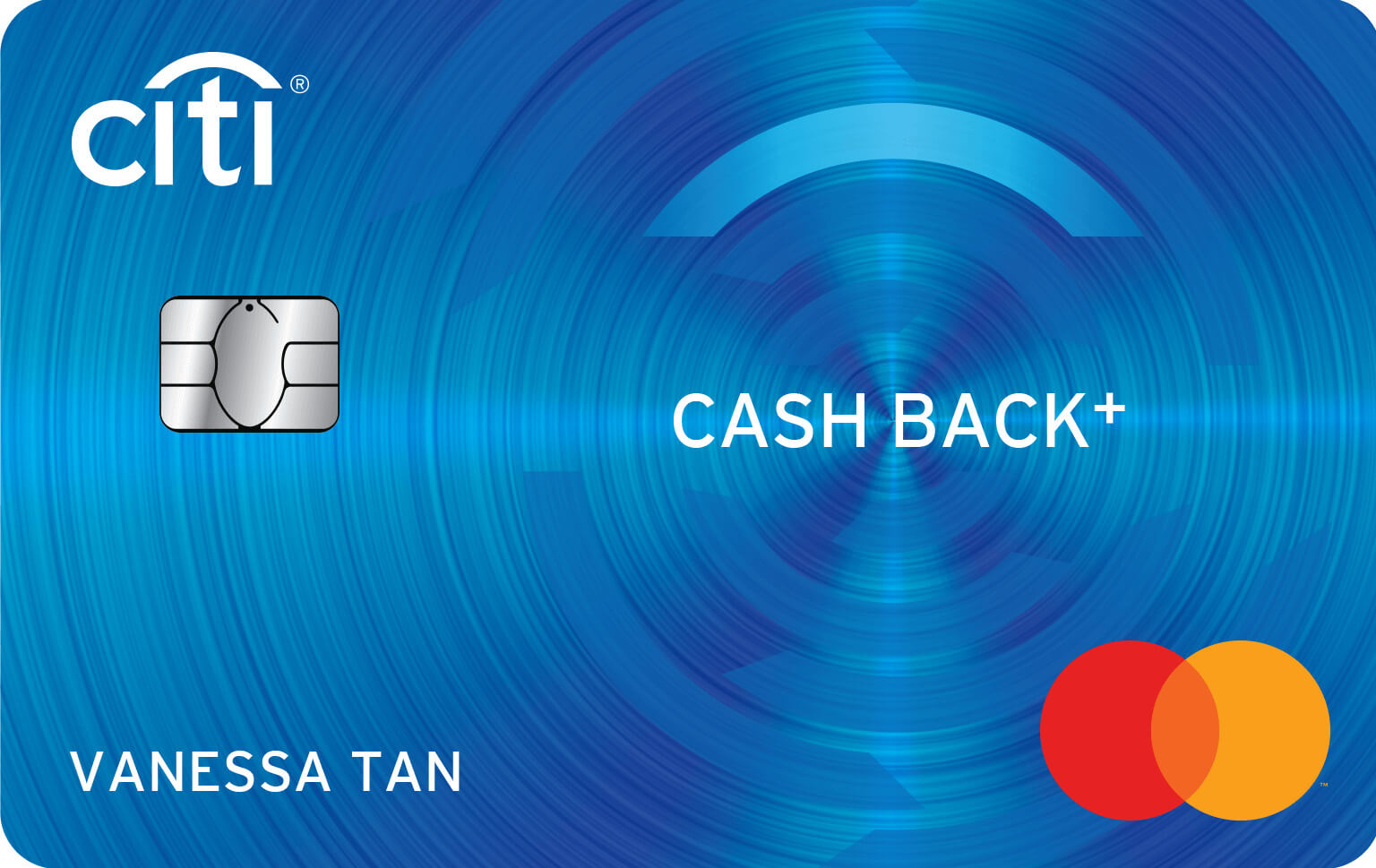
Citi Cash Back+ Card
10% cashback on an unlimited cashback card? Unheard of. But let’s see why…
Why we think it’s best: Most providers offer unlimited cashback in the range of 1.5 – 1.7%. They’re excellent when you’ve already hit the caps on your usual cashback cards and don’t want to settle for a paltry 0.1% rebate. The Citi Cash Back+ may not be the highest in the range, but it’s great if you’re expecting large purchases in the near term.
Say you’re buying new gadgets or taking your family on a holiday, for example. Citibank’s current welcome offer gives you 10% cashback on the first S$3,000 spent – and 1.6% unlimited cashback thereafter. Be sure to time your purchases just after the card approval.
Eligibility requirements: Citizens/PRs over 21 years of age with at least S$30,000 annual income. Foreigners must have at least S$42,000 annual income.
Annual fees: $194.40, waived for the first year
Key features:
- 1.6% unlimited cashback year-round with no minimum spend
- 0.4% bonus cashback if you’re a Citi Plus customer
4. UOB Absolute Cash Back Card
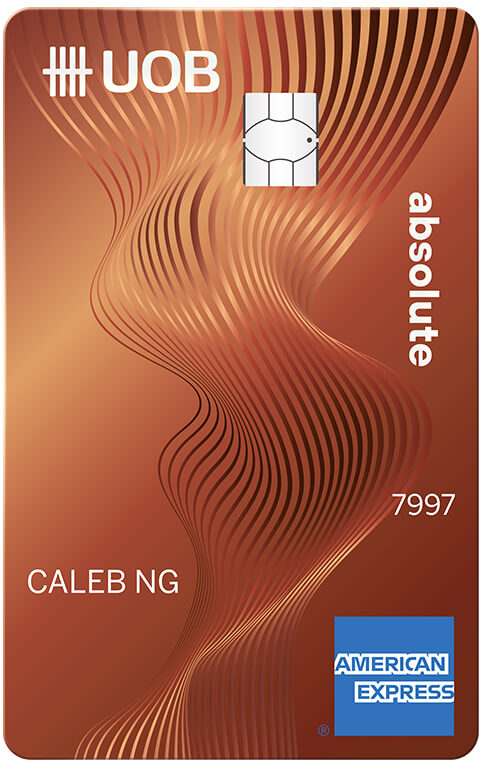
UOB Absolute Cashback Card
While the Citi Cash Back+ is first-rate for the initial two months, the UOB Absolute Cashback stands out for consistent unlimited cashback for the long term.
Why we think it’s best: Many unlimited cashback cards exclude bills like GrabPay top-ups. Not the UOB Absolute Cashback. Feel free to put big expenses like school fees, hospital bills, telco and utility bills, rental payments, and e-wallet top-ups on this card.
And at 1.7%, this is the highest stable unlimited cashback rate you’ll find.
Eligibility requirements: Citizens/PRs over 21 years of age with at least S$30,000 annual income. Foreigners must have at least S$40,000 annual income.
Annual fees: $194.40, waived for the first year
Key features:
- 1.7% unlimited cashback with no minimum spend
- One free supplementary card
- Almost no exclusions
5. Citi PremierMiles Card
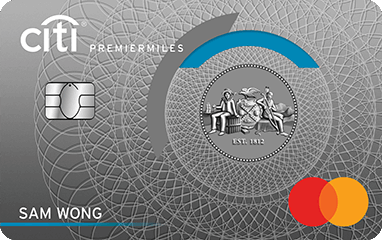
Citi Premier Miles Card
At first glance, the Citi PremierMiles may not be the hottest choice for accumulating miles. But take a closer look and you’ll see a plethora of welcome bonuses, renewal bonuses, and mile-earning promotions that you won’t want to miss.
Why we think it’s best: If you frequently use booking platforms to secure the best travel deals, you’ll get the most bang for your buck with this card. Agoda and Kaligo purchases give you 7 and 10 MPD respectively.
Citi also has a wide range of airline partners, so you won’t be locked into a single airline.
Eligibility requirements: Citizens/PRs over 21 years of age with at least S$30,000 annual income. Foreigners must have at least S$42,000 annual income.
Annual fees: $194.40, waived for the first year
Key features:
- 2 MPD on foreign currency spend and 1.2 MPD on local spend
- 2 complimentary airport lounge visits per year
- Earn miles on rent, insurance premiums, taxes, utilities, and education expenses with Citi PayAll
- Up to S$1,000,000 travel insurance coverage when you charge your airfare to the Citi PremierMiles Card
6. Citi Cash Back Card

Citi Cash Back Card
If travelling the world in search of a good meal is your thing, the Citi Cash Back Card may be an apt companion.
Read also: Best Cashback Credit Cards for Singapore
Why we think it’s best: There aren’t too many cards giving you this much cashback for dining and groceries, and we all know that food can be a big cost.
Most other cards offering rebates for food will cap your cashback per category, limiting you to a few hundred in monthly food expenses. In contrast, the Citi Cash Back Card has a single combined cap – this way, you can claim rebates for much more of your dining and grocery expenses.
Eligibility requirements: Citizens/PRs over 21 years of age with at least S$30,000 annual income. Foreigners must have at least S$42,000 annual income.
Annual fees: $194.40, waived for the first year
Key features:
- 6% cashback on restaurants and cafes worldwide
- 8% cashback on groceries and petrol worldwide
- 20.88% fuel savings at Esso and Shell
7. Maybank Horizon Visa Signature Card

Maybank Horizon Card
Dreaming of your next holiday? This card gives you a way to work towards free tickets.
(Read also: 2022 List of the 7 Best Miles Cards for Singapore)
Why we think it’s best: Most cards offering air miles give you the best miles-per-dollar (MPD) rates only for overseas or travel spending. This is one of the few cards that gives you high MPD for local spending, so you can still rack up those miles while homebound.
Eligibility requirements: Citizens/PRs over 21 years of age with at least S$30,000 annual income. Malaysians must have at least S$45,000 annual income; other foreigners, at least S$60,000 annual income.
Annual fees: $180, waived for three years. Automatic annual fee waiver with S$18,000 minimum spend per year.
Key features:
- 3.2 MPD for dining, petrol, public transport, Grab, taxi rides, and Agoda bookings. 2 MPD for travel spending and foreign transactions. Requires minimum spend of $300 monthly
- VIP lounge access when you charge S$1,000 in a single retail transaction within 3 months prior to travelling
- Free travel insurance coverage of up to S$1,000,000 when you charge your full travel fare to the card
8. UOB KrisFlyer Card

UOB Krisflyer Card
Like the Maybank Horizon Visa Signature, this card gives you high MPD for local spending – with the perk of extra miles when you spend with any Singapore Airlines brand.
Why we think it’s best: Granted, this card is for those who mainly fly SIA or Scoot. But if that’s you, the UOB KrisFlyer Card is great because your high MPD earn rates aren’t limited to overseas spend or certain times of the year.
(The AMEX KrisFlyer Card, for example, only gives you boosted MPD rates for 2 months out of the year.)
UOB also gives lots of bonus miles as a welcome gift to new card applicants, so you can accumulate those miles quickly.
Eligibility requirements: Citizens/PRs over 21 years of age with at least S$30,000 annual income. Foreigners must have at least S$40,000 annual income.
Annual fees: $192.60, waived for the first year
Key features:
- 3 KrisFlyer miles per dollar spent on SIA, Scoot, KrisShop, and Kris+
- 3 KrisFlyer miles per dollar spent on dining, food delivery, online shopping, travel, and transport with minimum S$800 annual spend on SIA, Scoot, and KrisShop
- KrisShop rebates and complimentary tier upgrades
- Fast track to KrisFlyer Elite Silver status
- 10,000 KrisFlyer miles when you renew the card
- One free supplementary card
- Promo: Get up to 32,000 miles for new-to-KrisFlyer UOB card applicants. Valid until 31 Jan 2023.
9. Maybank Platinum Visa Card

Maybank Platinum Visa Card
A low-maintenance starter card for cashback.
Why we think it’s best: Most cashback cards require a minimum spend of between S$600 to S$800, failing which you’ll earn a lousy 0.02 – 0.05% cashback. The Maybank Platinum Visa only requires a S$300 minimum spend for you to earn 3.33% in rebates, making this an excellent choice for low spenders.
Eligibility requirements: Citizens/PRs over 21 years of age with at least S$30,000 annual income. Malaysians must have at least S$45,000 annual income; other foreigners, at least S$60,000 annual income.
Annual fees: $80 (or $20 charged quarterly), waived for three years. Automatic fee waiver when you charge to the card once every 3 months.
Key features:
- 3.33% cashback with a minimum spend of S$300 for every month in a quarter
- Links with the Maybank SaveUp programme for bonus interest on your savings
- Complimentary travel insurance cover of up to S$500,000
10. Maybank Family & Friends Card
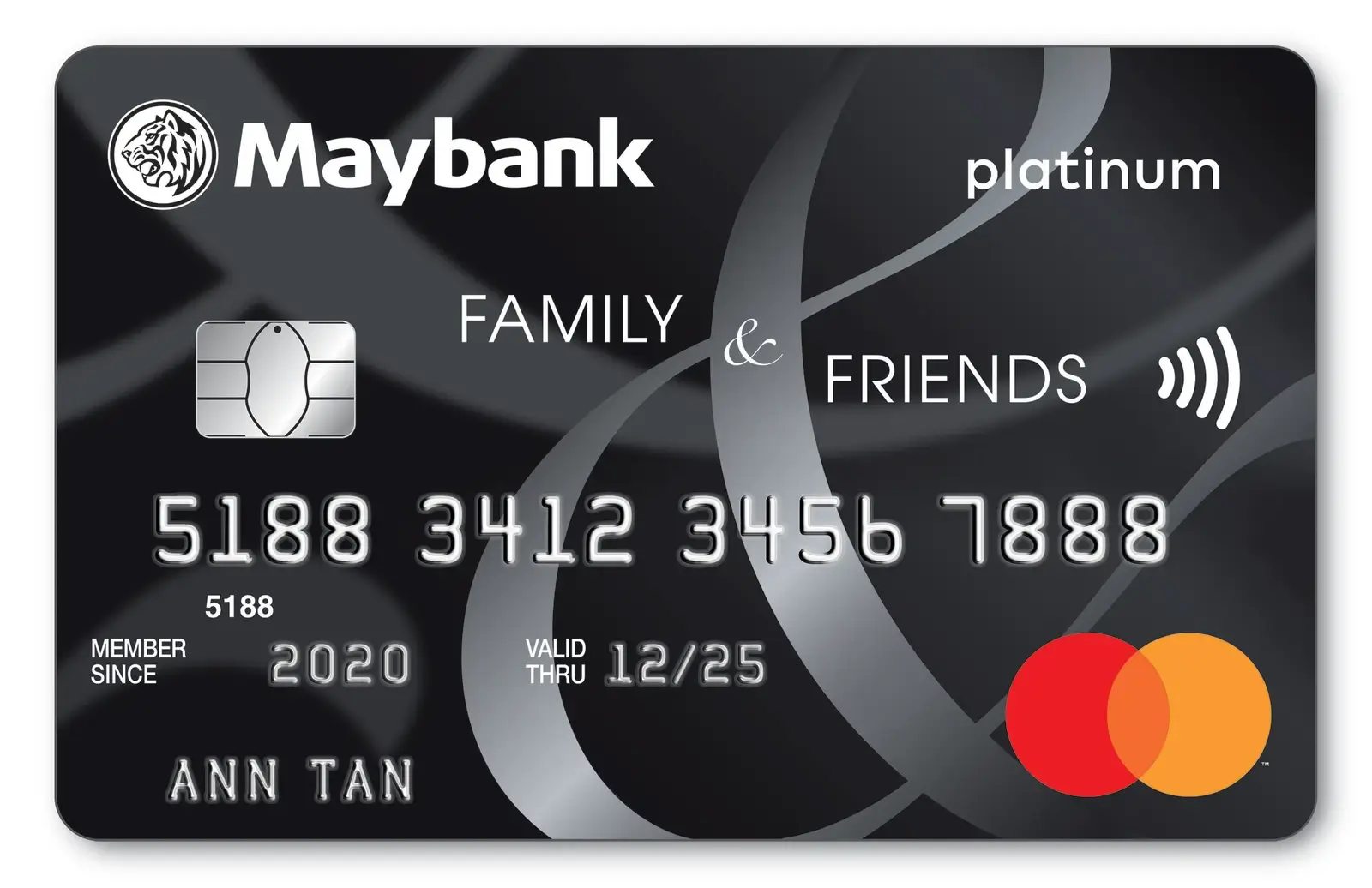
Maybank Family and Friends
A practical choice to get cashback from expenses that most of us are likely to incur.
Why we think it’s best: This card covers a number of everyday expense categories like online streaming, transport, dining, food delivery, and groceries. It also has one of the highest cashback caps we’ve seen.
Eligibility requirements: Citizens/PRs over 21 years of age with at least S$30,000 annual income. Malaysians must have at least S$45,000 annual income; other foreigners, at least S$60,000 annual income.
Annual fees: $180, waived for three years
Key features:
- 8% cashback on your choice of 5 out of these 10 options: transport, dining and food delivery, groceries, mobile/internet/TV plans, entertainment, online fashion, pharmacies, retail and pets, sports, beauty and wellness with minimum S$800 spend
- Cashback capped at S$25 per category, or a total of S$125 monthly
- One free supplementary card
11. UOB Lady’s Card

UOB Lady’s Card
A card offering flexibility – and exclusive to women.
Why we think it’s best: You can change your preferred spending category every quarter, and there’s no minimum spend required for the high earn rates.
Eligibility requirements: Female citizens/PRs over 21 years of age with at least S$30,000 annual income. Foreigners must have at least S$40,000 annual income.
Annual fees: $192.60, waived for the first year
Key features:
- 10X points / 4 MPD for the first S$1,000 spend in a category of your choice, no minimum spend required
- Available categories include beauty & wellness, fashion, dining, family, travel, transport, and entertainment
- E-commerce protection on online purchases
- 0% interest-free payment plan over 6 or 12 months
- One free supplementary card
Frequently Asked Questions About Credit Cards
- How many credit cards should I have?
- What is an annual fee for a credit card?
- What is a credit card minimum payment?
- Can I get a joint credit card?
- What happens if I can’t keep up with repayments?
- What is a balance transfer for credit cards?
- How do I cancel a credit card?
How many credit cards should I have?
However many you can feasibly keep track of! But if you need a concrete number, keep two to three credit cards – four, at most. You’ll need to monitor your credit statements every month, so you don’t want to bite off more than you can chew.
Credit cards help you prove that you’re good at paying money back on time. That sends positive signals to banks in case you need to take out a loan in future.
But having too many cards can actually hurt your credit score, since it makes you appear desperate for credit. Sticking with two or three credit cards is optimal, so you can spread out your purchases across cards while also building a good credit history.
What is an annual fee for a credit card?
This is the fee you’ll pay to card providers in exchange for the card’s benefits. Most of the time, the better the benefits, the higher the fees. You’ll have to consider how much value you’re actually getting from a card to decide if it’s worth its annual fee.
In Singapore, entry-level credit cards for working adults usually have an annual fee of $192.60 (including GST). Most cards waive this for at least the first year, but you’ll find a few with longer waivers. Some cards, like the HSBC Revolution Card, have no annual fees at all.
What is a credit card minimum payment?
This is the minimum you have to pay back every month, failing which you’ll face late payment penalties. In Singapore, most banks require at least $50 or 3% of the payable amount, whichever is higher.
We advise always spending within your means, though. Never spend what you don’t think you can pay back in full every month.
Can I get a joint credit card?
Yes, you can apply for supplementary cards under the same credit account. Supplementary cardholders enjoy lower annual fees (or none at all), so you’ll save at least a hundred dollars every year.
The age requirements are usually lower as well, so parents can get cards for their kids.
In most cases, purchases on the supplementary cards will earn the same rewards as on the principal card. That means more cashback, points, or whatever you’re aiming for, though you’ll have to watch out for caps as well. If you need to meet a certain minimum spend, having a few people work towards the same goal always helps.
The downside is that any liabilities will fall on the principal cardholder, so be sure you can trust the person you’re giving the supplementary card to. A single credit account also has just one credit limit even if there are multiple supplementary cards.
What happens if I can’t keep up with repayments?
A few things:
- You’ll be smacked with late payment charges
- You’ll have to pay interest on the outstanding amount, which adds up really quick
- Your credit score will drop
Then there are the longer-term implications. If you’re over 90 days past due, you’ll be in default. This shows up on your credit report. The next time you apply for a credit card or perhaps a housing loan, the bank will see that you defaulted and are unlikely to approve your application.
If you think you may have trouble making repayments, contact your card provider as soon as possible and see if you can work out an alternative arrangement.
What is a balance transfer for credit cards?
When people have trouble making their credit card repayments, banks sometimes offer them the option of a balance transfer. This is when you transfer your credit card debt to a new short-term loan facility.
Instead of paying the credit card’s exorbitant penalties and interest, you’ll repay your debt on the terms of the new loan agreement. In short, balance transfers buy you time to pay off your credit card debt.
It’s not free, of course. Currently, you’ll pay between 1.5 – 4.88% in processing fees, depending on the duration of the balance transfer you choose. But that’s better than the 20 – 28% annual interest you would’ve paid for your remaining credit card debt.
How do I cancel a credit card?
Assuming you’ve already paid off the remaining balance and redeemed any rewards, you can simply call your bank to cancel your credit card. Some banks also allow you to cancel the card via their app.
If you have to go through a human agent to cancel the card, be prepared for the questions they’ll ask about why you’re cancelling. You can simply say that you don’t use the card often or that you don’t need its benefits. They may also make counter-offers to try to keep you as a customer, but don’t feel obligated to entertain these.
